Are you having a tough time with your white glaze for Easter treats? Give Easy Glossy Kulich Glaze Recipe (Cooked Method) a try and stress no more! This is the latest recipe that I've tried that was shared with me by my aunt and fell in love with it from the first attempt.
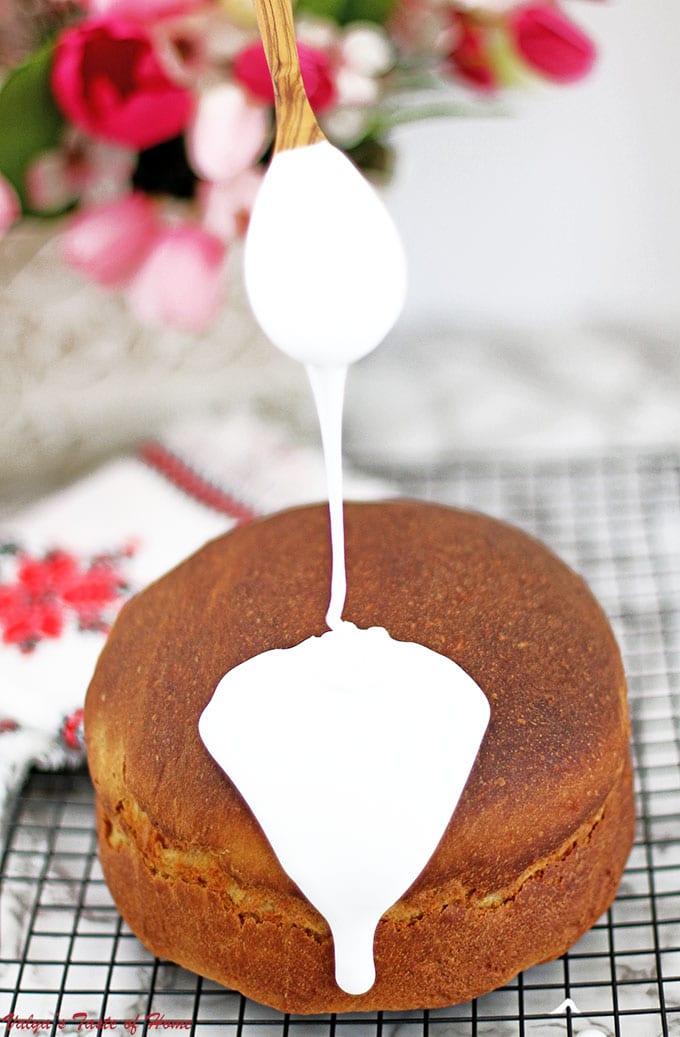
White glaze is used for many desserts, and a good glaze recipe is tough to find and pretty tricky to master. So, I'm super excited to share this one with all of you, my friends, because this is the tastiest and the most cooperative glaze I've ever made. And one I'm sure you'd appreciate, as well.
It is very smooth and light in texture, with a delicious lemony taste you just wanna eat by the spoonfuls. But the taste is not all there is to good food, right? Presentation matters, too.
This glossy goodness is pretty solid in the looks component. Once it dries, it creates a nice, even-toned gloss throughout, which is especially ideal for the traditional Easter Kulich bread, giving it a beauty that is too cute to eat!
Another bonus is that it does not crack too much when cutting the bread. The glaze is firm when dry but breaks only under the knife, not across the whole surface of the bread. Give this recipe a try to know what I mean. 😉
Table of Contents
📋 Recipe Ingredients
- Gelatin (plain)
- Water
- Granulated sugar
- Freshly squeezed lemon juice
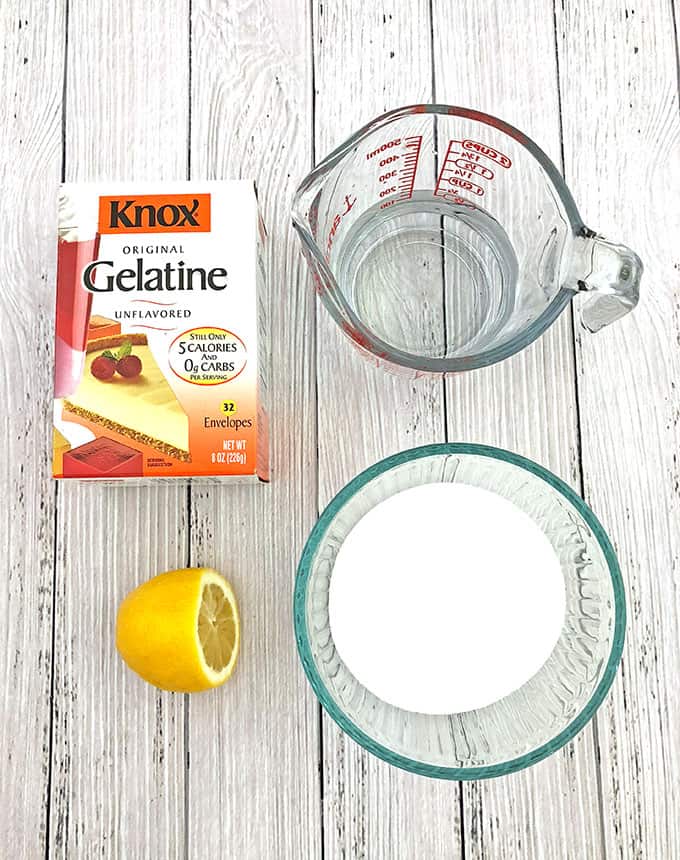
How to make Easy Glossy Kulich Glaze Recipe (Cooked Method)
Add gelatin to a small bowl, add 3 tablespoons of water, stir set aside and let it soak.

Add sugar to a small pot and add ⅓ cup of water. Place it on a stovetop on high heat and bring to a boil stirring constantly. That will take approximately 5 minutes. Remove from heat.

Add soaked in gelatin and stir to combine. Transfer this hot sugar-gelatin mixture into a clean small bowl.
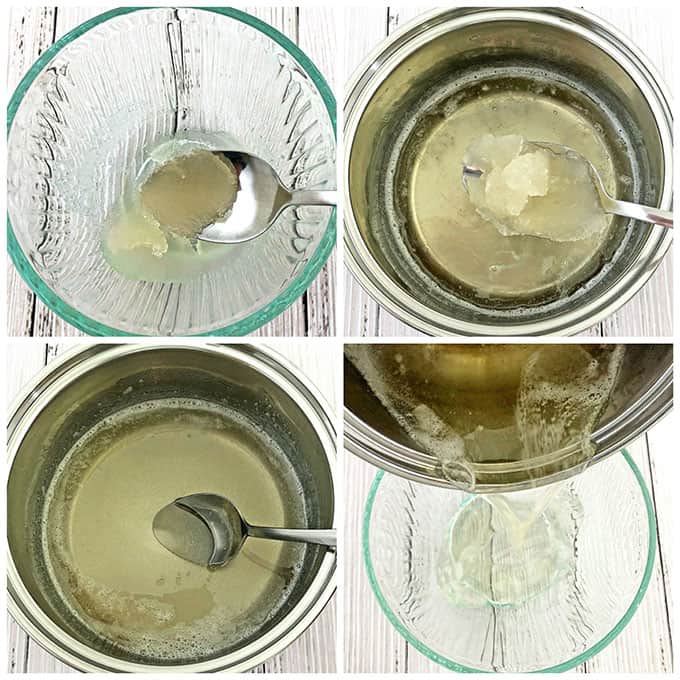
Using a hand mixer beat on high for 2 minutes. Add freshly squeezed lemon juice and beat for another 2 minutes.

Recipe Card
Easy Glossy Kulich Glaze Recipe (Cooked Method)
Ingredients
Easy Glossy Kulich Glaze Recipe Ingredients
- ½ tbsp. – gelatin plain
- 3 tbsp. – cold water + ⅓ cup
- 1 ¼ cup – granulated sugar
- 1 tbsp. – freshly squeezed lemon juice
Instructions
How to make Easy Glossy Kulich Glaze Recipe (Cooked Method)
- Add gelatin to a small bowl, add 3 tablespoons of water, stir set aside and let it soak.
- Add sugar to a small pot and add ⅓ cup of water. Place it on a stovetop on high heat and bring to a boil stirring constantly. That will take approximately 5 minutes.
- Remove from heat. Add soaked in gelatin and stir to combine. Transfer this hot sugar-gelatin mixture into a clean small bowl.
- Using a hand mixer beat on high for 2 minutes. Add freshly squeezed lemon juice and beat the another 2 minutes.
Notes
If you make this Easy Glossy Kulich Glaze Recipe (Cooked Method), please share a picture with me on Facebook, Instagram, or Pinterest. Tag with #valyastasteofhome. I’d love to see your creations!
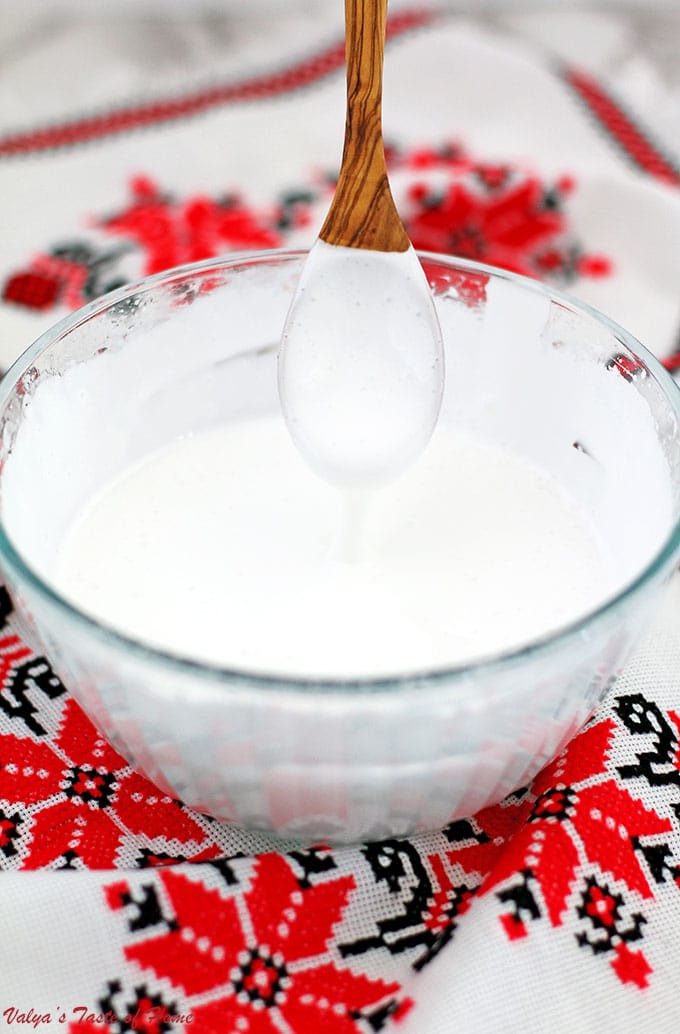
💭 Tips
This glaze portion is enough to glaze 50 Mini Kulich Recipe. Cool Mini Kulich should be warm to touch before applying the glaze. Sprinkle the sprinkles of your choice right after decorating with glaze.
This glaze takes longer to dry than a regular glaze made out of powdered sugar. The glaze is beautifully glossy after dries out.
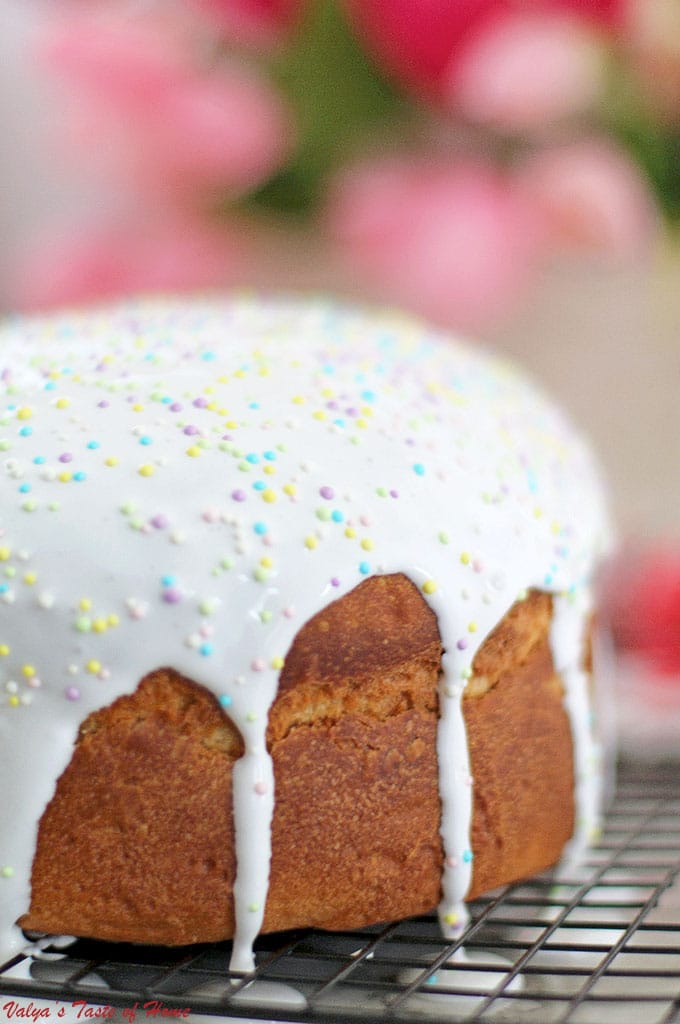
🍞 Similar Recipes
- Mini Paska Easter Bread Recipe (Cupcake Size Paska - Kulich)
- Paska Easter Bread Recipe
- Sweet Braided Easter Bread with Raisins
Kitchen items I used in making this recipe:
(If you need any of these items, simply click on the picture to order. This post may contain affiliate links which won't change your price but will share some commission.)





Love This Easy Glossy Kulich Glaze Recipe (Cooked Method)? Please Save and Pin on Pinterest!

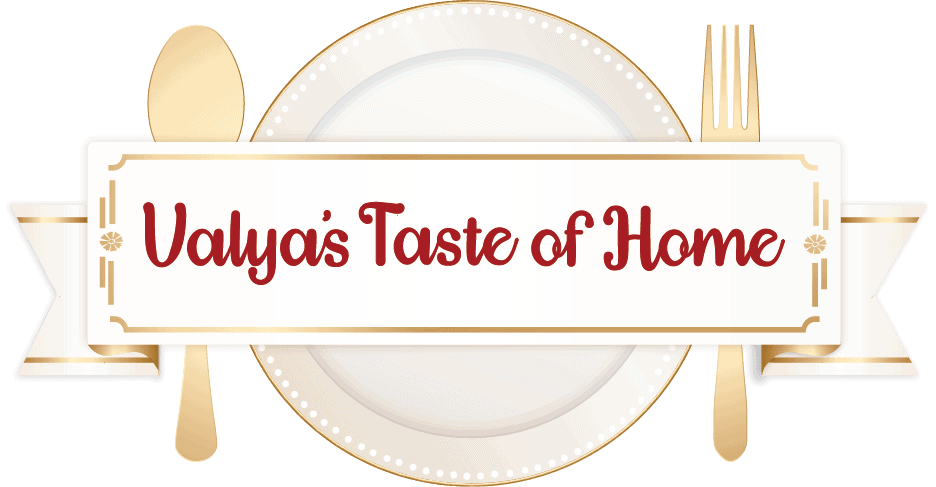

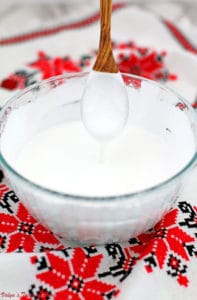
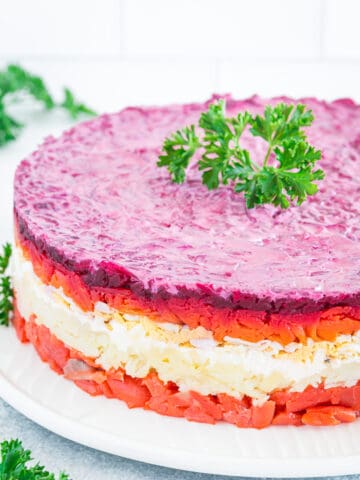
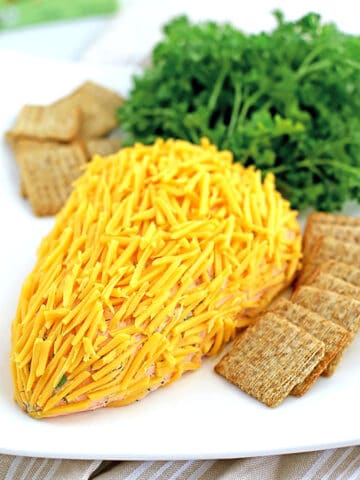

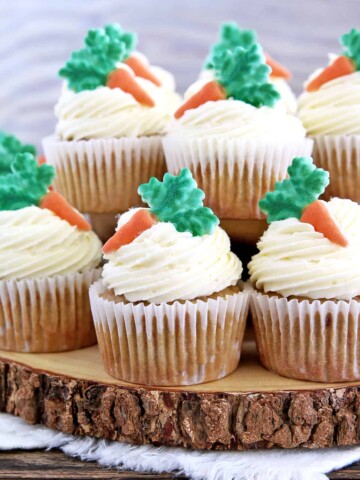

Tanya says
Valya, I came back to say that my family and I loved this recipe! I did not taste gelatin at all mentioned above after it dried. Thank you for another amazing recipe!
www.valyastasteofhome.com says
I am so happy to hear that Tanya! Thank you kindly for coming back and reviewing the recipe with five stars! 😀
Michelle says
This is the best glaze I’ve ever made. ? Absolutely delicious! I added 2 tbsp of ? and it was very tasty. This is the only glaze I’ll be using in the future. Thank you for the recipe!
www.valyastasteofhome.com says
Im glad to hear that you liked the recipe. Adding more lemon is a great idea. Thank you for sharing your experience with me and for the amazing review! 🙂
Olya says
I've tried this glaze recipe before and it smelled like gelatin, and its not a very pleasent scent.....
www.valyastasteofhome.com says
When it dries out it doesn’t taste or have gelatin scent at all. Personally I don’t mind it. You can replace it with agar if you’d like.